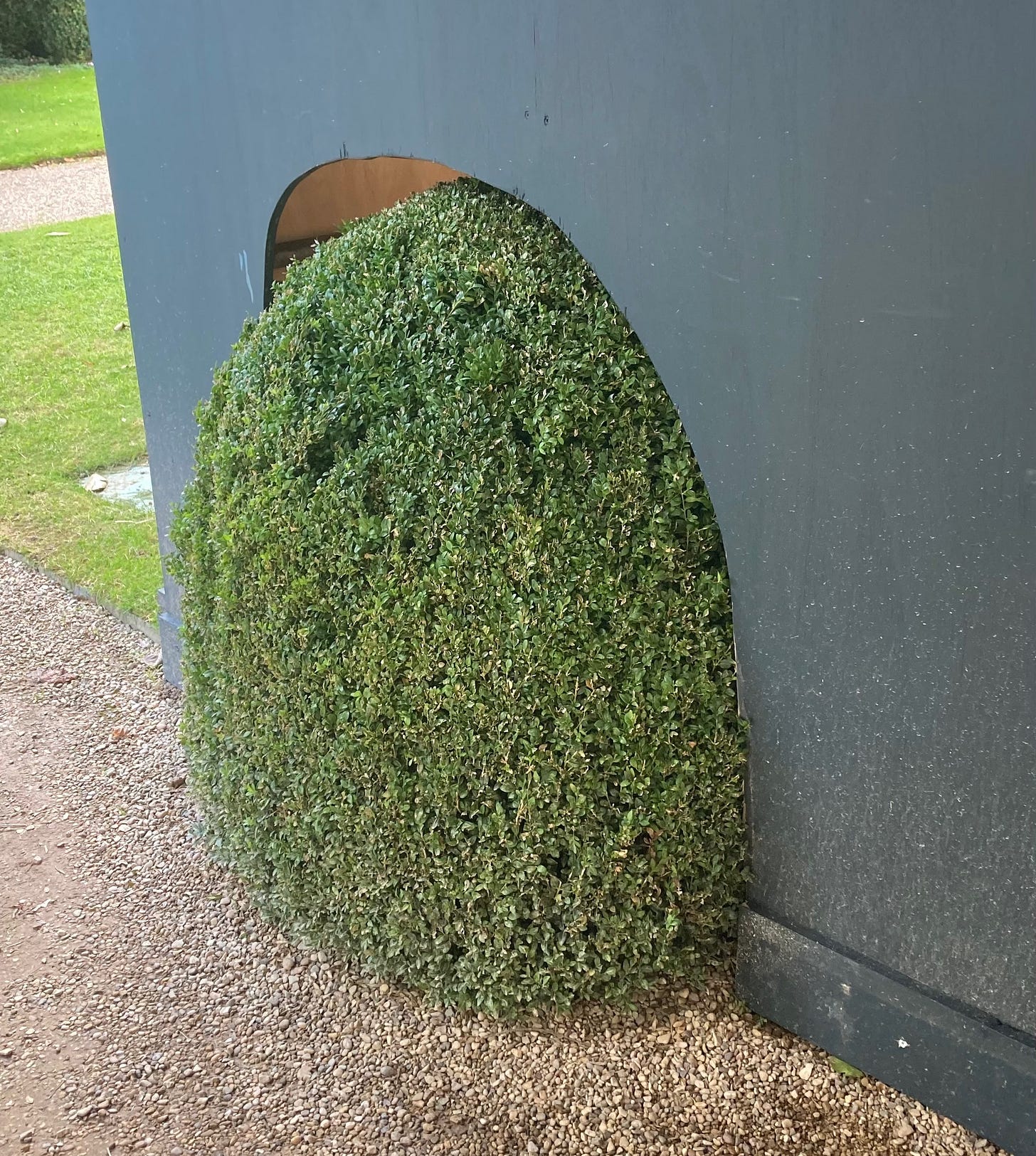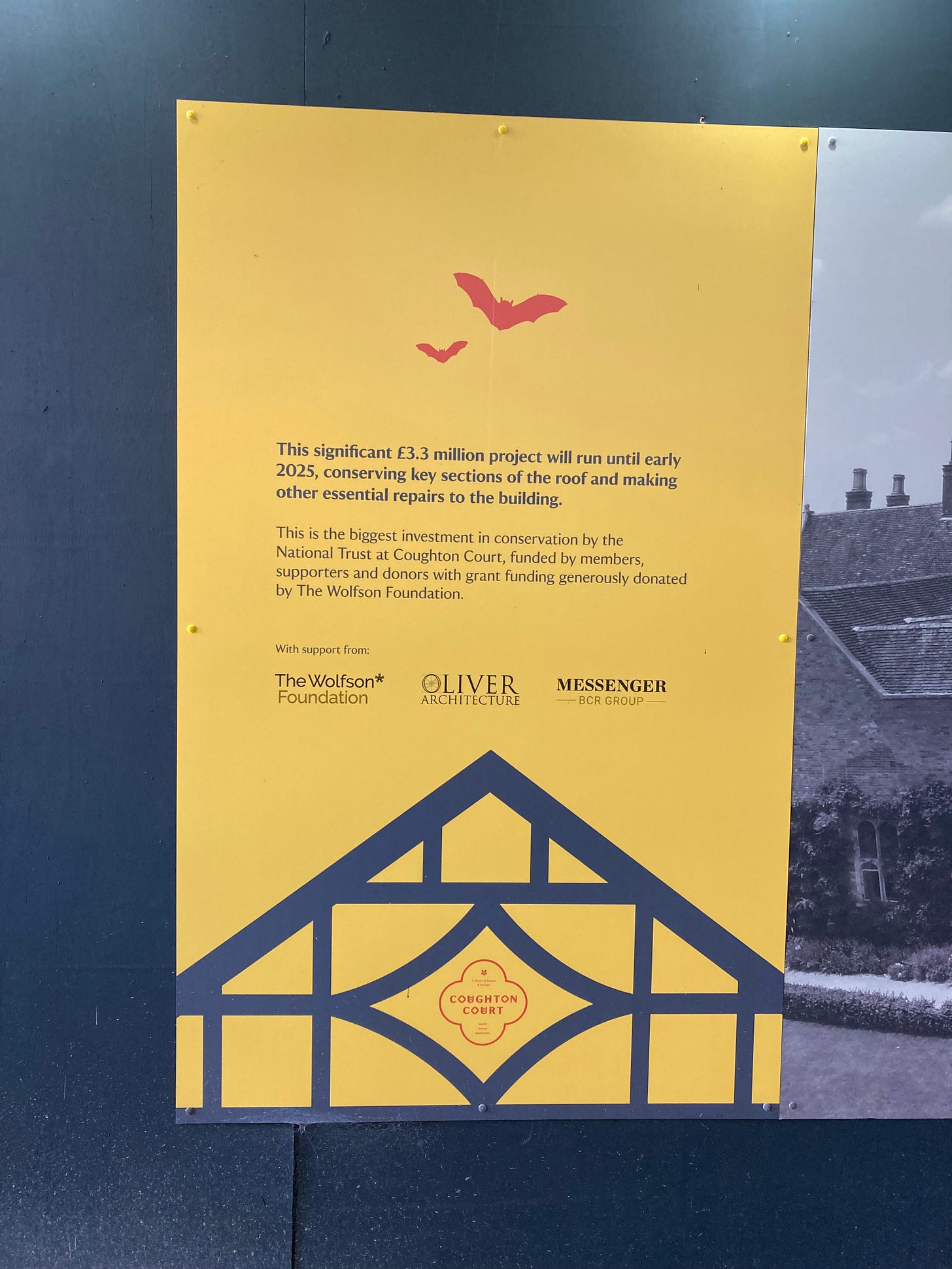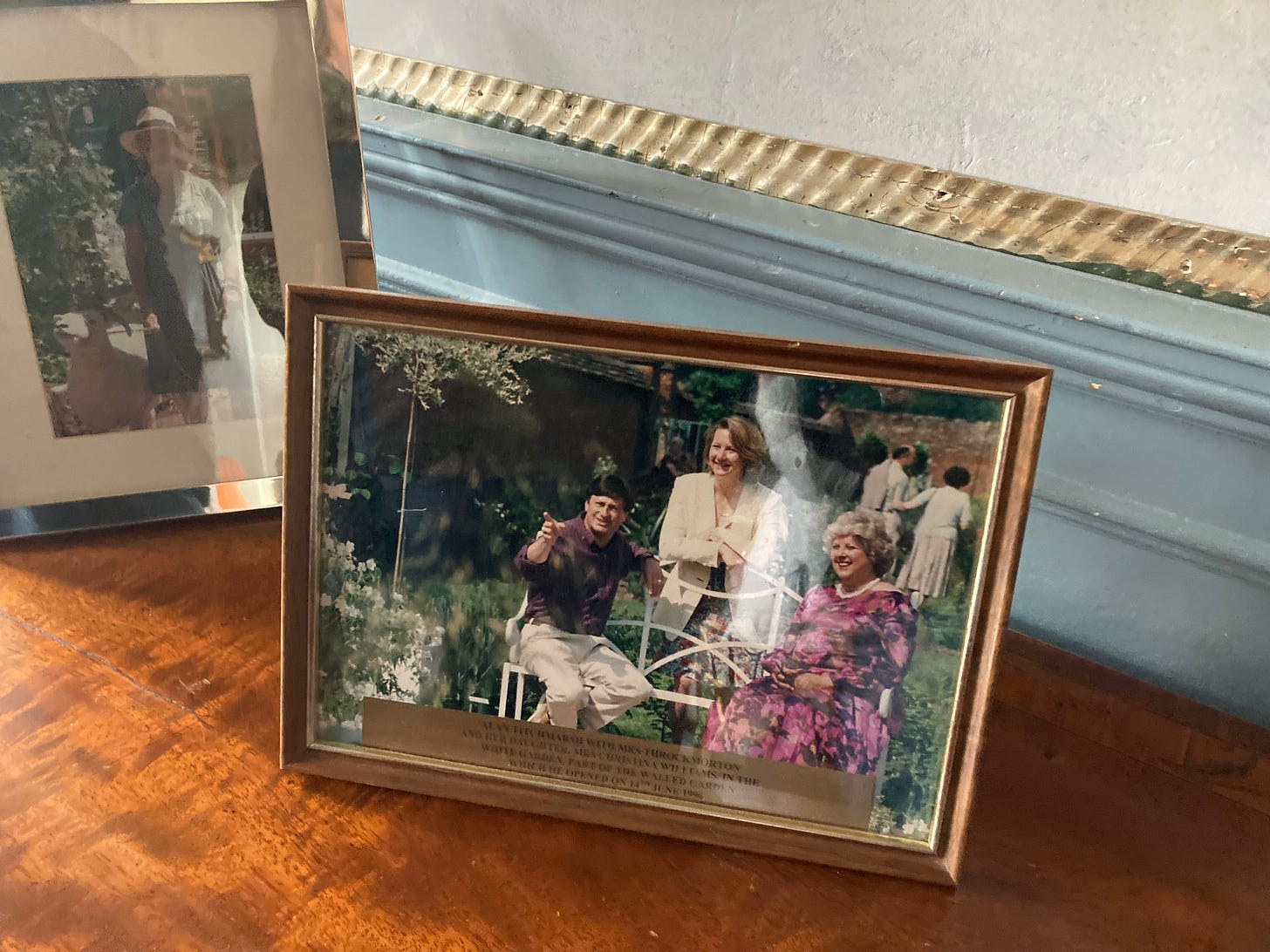Subsidised
a roof over their heads
A selection of events came together over the last few days which ended up with me being really quite angry. Properly so, not just suffering the amused hysteria with which I visit most stately homes.
We’ll begin at the beginning, which is Coughton Court on the Warwickshire / Worcestershire border, and where I arrived with no particular agenda in mind other than happening to be in the area.
As was clear even from the road, the roof was being done and the whole building was shrouded in scaffolding. Although being the National Trust this was very neat and careful and was minding the topiary.
But hoardings can also tell tales, and this one contained quite the story.
At this point my eyebrows were starting to raise. A quick on-site google told us that the Throckmorton family were still very much in residence; later digging revealed that they have a lease which lasts for three hundred years, and have kept hold of enough of the estate for it to have its own website, and even to do private (paid) tours of their bit of the house.
And they also manage to get paid a frankly astronomical sum to look after the gardens. This is from the NT Annual Report.
Only five donors like the Throckmortons are listed as being paid by the trust, only one other is anything like this size1.
And it gets better. Walk a few meters further along the gravel paths and you will find this.
To summarise, the family get to live in their house and the National Trust pay for the roof repairs and a Charitable Trust helps with the cost.
I am personally irked by this in two ways. One is that I live in an old listed house and we have to pay for our own repairs because we aren’t baronets. The second is that I’ve been working in the charitable sector, and I can tell you that there are charities to do with poverty, inequality and disability who are finding it hard to get any grants at all, and they often only want a hundredth of this amount.
From then on things did not get better, because just a few rooms into the house it became very clear that the Throckmortons had not been contained into their one private wing. Photos in silver frames - the endless way in which the upper classes remind themselves of who they and their relatives are - mushroomed on every flat surface as a territorial statement of who really lived in the house and how privileged we were to be allowed into their world. And they’ve met Alan Titchmarsh and you probably haven’t.
The pictures also demonstrate that while the Throckmortons don’t technically inhabit all of Coughton any more, they get to act like they do.
The house, in the main, doesn’t have much else to recommend it. There is some furniture and stained glass, but nothing particularly striking and almost all the pictures are portraits, of varying quality and appeal.
This meant that, inevitably, the family and their history was the only focus of the visit and, once again, I felt that I was slowly shuffling round a shrine to the aristocracy, being expected to worship.
There was also some considerable whitewashing of this history, quite literally. One of the reasons that Coughton was taken on by the Trust is that it hasn’t been hugely altered since the seventeenth century, because the family were Catholic and therefore debarred from most of the big aristocratic money-raking schemes, like being in government. The only big change that happened to the house was the overlay of a slightly fey layer of Gothick architecture in the 1780s by Sir Robert Throckmorton.
The story we were told in the drawing room was that Sir Robert married three times: once because he was told to by his parents, once for love and once for money. It was with the dowry from this third wife that funded the improvements. The guides said that her family made money from a shipping line. That’s one way of putting it.
This is of course a euphemism for slavery. Her mother’s father and her own father owned estates in Jamaica, as did her brother, and it’s most likely that the £3,000 that Robert received when he married Lucy was the profits of the sugar trade and enslaved people. Which does rather change how you look at the carvings and stained glass, so perhaps it needs saying out loud.
All of which was aggravating enough, but what crystallised this into cold hard anger was an article by John Harris a few days later, about the under-funding of local museums. It’s a depressing story in itself, but what really stood out to me is that the places that he singles out as being under threat - the People’s Story Museum in Edinburgh, the Somerset Museum of Rural Life and the industrial Museum of Making in Derby - were all three telling the histories of ordinary people. They cannot get the funding, but a posh house with its family still comfortably ensconced can.
It’s not just that this is the English class system writ large, although that’s a big enough problem on its own. By walking round these house, listening to the stories of the upper classes, not noticing that no one has mentioned anything about the servants or the labourers or the women who didn't inherit or the dubious places the money came from, we are not just ignoring the problem of class, we are keeping it alive, feeding its continuing power. And surely we can do better than that.
As ever, if you like this and would enjoy an entire, organised, book of furious country house visits, I am writing it. You can encourage me by pledging for a copy of Burning Down the House in advance and getting your name in the front as a supporter.
This is the other one, for building services at St Michael’s Mount: “The Trust uses the services of the St Aubyn family’s own estate and building companies: St Aubyn Estates, St Michael’s Mount Trading and Cornish Heritage Builders for work on the Mount. During the year, these companies provided services at a cost to the Trust of £2,492,018 (2022: £1,285,595). The balance outstanding at 28 February 2023 was £156,938 (2022: £93,298).”









It makes me so angry